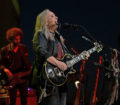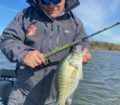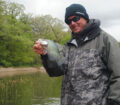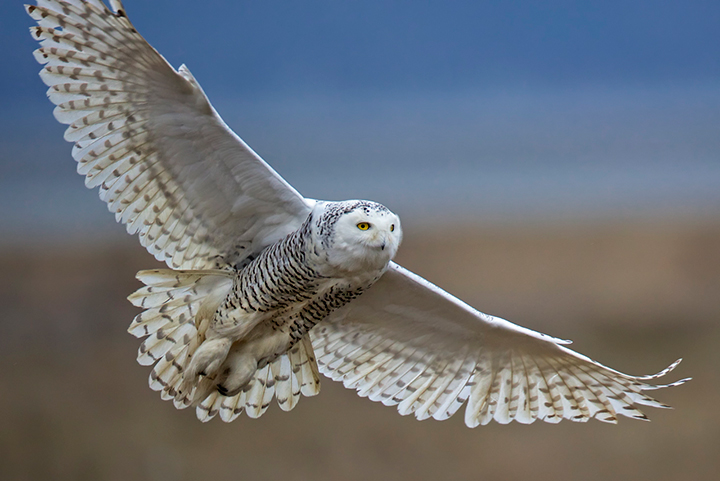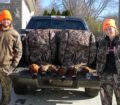By Steve Weisman
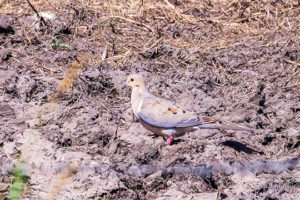
Photo by Bill Beardsley (Prairie Ridge Photography)
It’s hard to believe that Iowa has now had a dove season for 11 years. In addition to the mourning dove, there is also the Eurasian collard-dove, which is similar in appearance but has a distinctive mark or “collar” on their neck, and are a little larger than the mourning dove. They can be legally bagged. Dove season is Sept. 1 to Nov. 29, with a daily bag limit of 15 doves, and possession limit of 45.
Shooting hours are one-half hour before sunrise to sunset. Hunters must have a plug in their shotgun just as they would during the waterfowl season later in the fall. Since doves are considered a migratory game bird, hunters will need to have a plug in their gun limiting them to three shells and must register with the Harvest Information Program before they go hunting.
The cool thing (even though it will probably be warm and humid) about the dove season is that you don’t need a lot of equipment. Just you, your shotgun, a lot of shells, a bucket to sit on and to carry out the bagged doves and a spot that has doves using the area you plan on hunting.
Scouting
It is important to get out scouting before the season begins to get a handle on where the doves are and what their habits are. Even though they are pretty much anywhere, concentrations of doves occur based on certain factors. When scouting, try to check your potential hunting spots in the early morning and early evening. Look to figure out their flight pattern.
Mourning doves prefer feeding on open ground and eat a variety of seeds and grains. As a result, several DNR wildlife areas in each county have food plots that have been planted to attract doves. Portions of these food plots will be cut down/disked a few days prior to the season to help attract doves to the area.
The Iowa DNR has a list of public wildlife areas and private land enrolled in Iowa Habitat Access Program (IHAP) where dove plots (primarily sunflowers) have been added. The Iowa Habitat and Access Program has grown to nearly 29,000 acres, significantly increasing the amount of land available to hunters in Iowa. These opportunities are thanks to landowners who participate in the Iowa Habitat and Access (IHAP) program.
To find these food plot areas, just go to the Iowa DNR website, click on hunting and search for mourning dove hunting in Iowa. There, you will find a PDF of “Food Plot Sites” by county.
Once you find those areas, I’d suggest visiting the public area to actually see the plot itself.
An ideal hunting spot would be a harvested/disked sunflower field, a supply of water (pond or slough) in the area and a nearby roosting area. Check to see what hiding spots are available. Standing corn? Standing sunflowers? Good fence line cover? Some tall grass prairie? Maybe a thicket or tree?
Look for multiple hiding spots, because these areas often will have multiple hunting groups in the same field. Check out where the sun will be when you hunt. If possible, avoid having to look into the sun. Best hunting times are early morning (the first two hours) and early evening (the last 1-2 hours). However, if you’re hunting a popular public area, don’t expect to just show up at sunrise or an hour before sunset and get your preferred spot.
Even better yet, if you can find private ground that has these options, for sure you will have a great hunt.
The hunt
Make sure to get to the area before the “optimum” hunting time and get concealed in a place where you can readily bring the shotgun up for a clear shot. Set up so that the shot will be inside 30 yards. When the doves do come through, expect them to come zipping through like little missiles. Veteran dove hunters know it’s not unusual to go through at least a box of shells or more during a hunt. Unless you have a dog with you to retrieve downed birds, make sure to mark the downed bird. A good hunting dog will mark and then find downed birds.
Registering for HIP
All dove hunters are required to register with the Harvest Information Program (HIP). The Harvest Information Program (HIP) is a partnership between the U.S. Fish and Wildlife Service and state wildlife agencies to collect information on the nation’s migratory game bird hunters and their harvest of migratory game birds. ALL migratory game bird hunters are required to register with HIP prior to hunting. Registration consists of a brief questionnaire. Hunters can register with HIP through the Go Outdoors Iowa app OR the Go Outdoors Iowa website (gooutdoorsiowa.com). Instructions and links are available: https://www.iowadnr.gov/ hunting/migratory-game-birds. It’s free, fast and the information is used to help determine participation and harvest. Register by following the instructions at www.iowadnr.gov/doves or by calling 1-855-242-3683.

